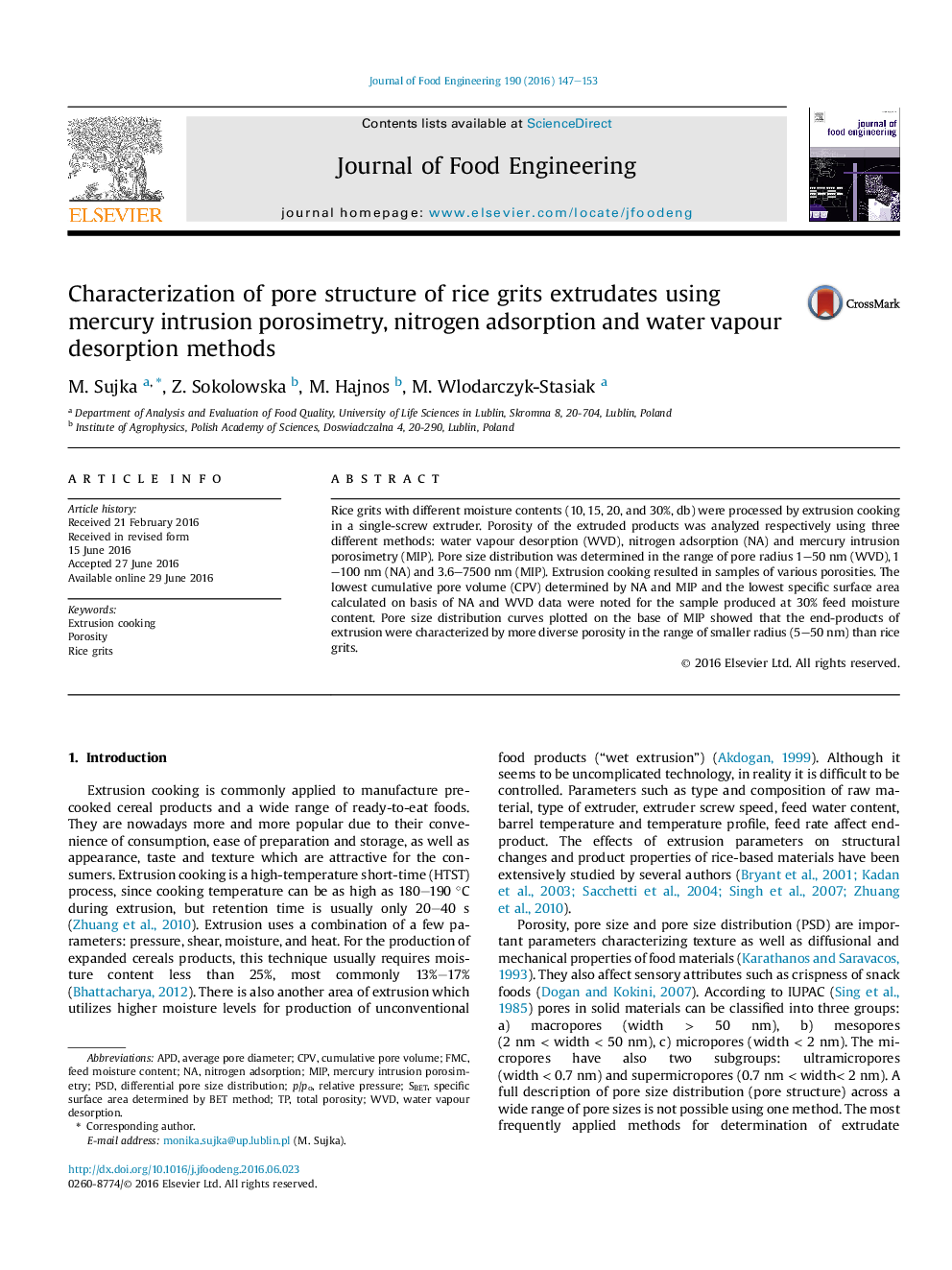| Article ID | Journal | Published Year | Pages | File Type |
|---|---|---|---|---|
| 222573 | Journal of Food Engineering | 2016 | 7 Pages |
•Rice grits containing 10–30% of moisture were processed by extrusion cooking.•Porosity of the extruded products was examined by three different methods.•An attempt was done to describe pore structure of the extrudates.•Feed moisture content affected pore size distribution and cumulative pore volume.
Rice grits with different moisture contents (10, 15, 20, and 30%, db) were processed by extrusion cooking in a single-screw extruder. Porosity of the extruded products was analyzed respectively using three different methods: water vapour desorption (WVD), nitrogen adsorption (NA) and mercury intrusion porosimetry (MIP). Pore size distribution was determined in the range of pore radius 1–50 nm (WVD), 1–100 nm (NA) and 3.6–7500 nm (MIP). Extrusion cooking resulted in samples of various porosities. The lowest cumulative pore volume (CPV) determined by NA and MIP and the lowest specific surface area calculated on basis of NA and WVD data were noted for the sample produced at 30% feed moisture content. Pore size distribution curves plotted on the base of MIP showed that the end-products of extrusion were characterized by more diverse porosity in the range of smaller radius (5–50 nm) than rice grits.
